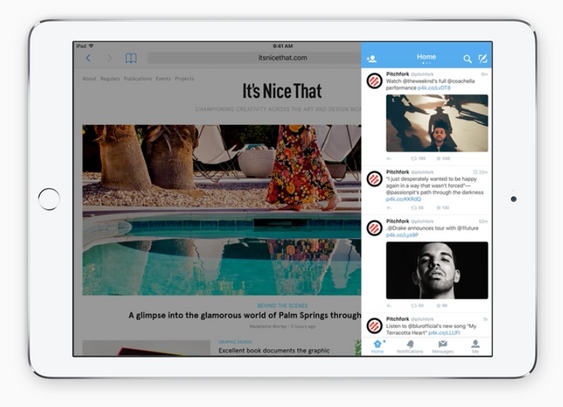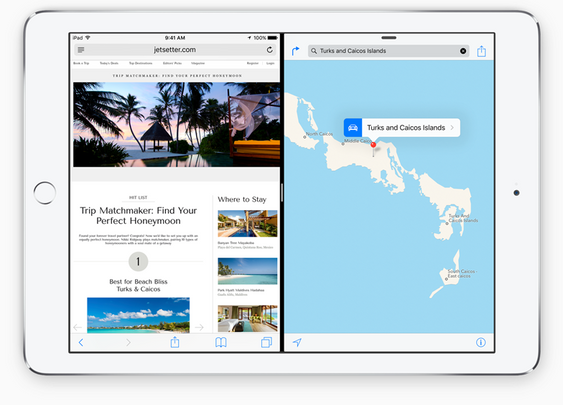It is one of the conclusions in 1:16 page report from Woje about Barents Observers future. The longtime media mogul received earlier this year the assignment of chairman Stig Olsen in Barents Secretariat in evaluating “the most appropriate development of the Barents Observer”.
The main conclusion is that online publication must have an editor who works at Redaktørplakaten conditions, with a own budget, and that the editor reports to the board and not to the general manager of the Barents Secretariat.
– BarentsObserver has gone through a natural evolution, as we have seen particularly in the trade press. First there was the an information publication, so there has been a professionalisation and professional development where this is a natural next step to take, says Woje to journalist.
Woje says conclusion that BarentsObserver has to work for the Editor is the same as a previous report from 2014 about newspaper.
– But I suggest a further tidiness in the organization. The editor must be appointed by the Board and report to the board and therefore also have responsibility for human resources.
Thomas Nilsen, as Monday was dismissed from his position as editor of BarentsObserver, has advocated that the newspaper must have new owners. It is not Woje agree.
– It is not like that in media companies that they can choose their owners. From an owner’s point of view should Barents Secretariat carry out information and knowledge dissemination. It has BarentsObserver been a great tool to. I do not see any reason why Barents Secretariat shall go from there.
Woje says it also is important that BarentsObserver jobs under ediTORs from a safety perspective. The publication must work under the Editor that the editorial staff should be able to apply pressure visas to Russia.
– It is important that they have the formal safety and can document what service they are there for.
Read
• The editor of BarentsObserver kicked
• Foreign Ministry surprised editor sparking
Got report Thursday
Chairman Stig Olsen said to the journalist that Monday’s dismissal of Nilsen is managed separately from the report, which he was handed on Thursday of last week.
Olsen characterizes the report as good and sober. But he would not comment on what he thinks about the recommendations.
– I do not anticipate anything, he says, and points out that the report will be discussed at a board meeting of the Barents Secretariat on October 23.
Later, it probably submitted to the Supervisory Board of the Secretariat, which consists of the three northernmost counties.
Read the journalist’s coverage of Barents Observer.
Here’s the full report from Thor Woje:
BarentsObserver – further development and organization
A study conducted by Thor Woje
24. September 2015
Proposed new organization:
1. BarentsObserver established as an independent editorial and organized as a separate department within the Barents Secretariat.
2. The editorial is headed by executive editor, who is employed at Redaktørplakaten terms.
3. Editor in chief appointed by the Board of the Barents Secretariat publisher company and reports directly to the board.
4. Editor in chief hires other editorial staff and has personal responsibility. Staffing Contracts clarifies editorial work.
5. It developed own department budget for BarentsObserver that includes funds for travel, freelance procurement and development. The budget is adopted as part of the organization’s total budget as general manager is responsible for.
6. Managing Director of the Norwegian Barents Secretariat and editor shall employer representatives pursue a good climate of cooperation and contribute to the company’s overall interests are safeguarded in the best possible way.
7. Editor has a meeting and make proposals to the Board in matters that directly affect or prejudice Barents Observer.
8. Editorial staff can undertake tasks of the Secretariat which is not contrary to editorial integrity. Such statements must be approved by the editor.
9. Editor in chief and editorial staff participating in meetings with external parties under the auspices of the Norwegian Barents Secretariat, shall have a clarified role for everyone present.
10. BarentsObserver operated within the approved purpose description. The editor prepares an editorial program included in the Secretariat’s annual business plan the Board has been presented and subsequently submits to the Supervisory Board. Editor activity plans are discussed and evaluated annually by the Board and can naturally be linked to the budget process. BarentsObserver included as a separate chapter in the Secretariat’s annual report.
11. The organizational change is so significant that it would be natural to float current employees related to editorial and bright out clean editorial positions. First add the board editor, then add the editor editorial staff in accordance with staffing plan and authorized positions.
12. The owners undergo the Secretariat’s governance structure to clarify roles and functions.
Suggested purpose description:
Barents Observer is an online newspaper with purpose transmit news and knowledge about the Barents cooperation, the Barents Region and the Arctic for a wide international audience. Information about developments in Russia and the Norwegian-Russian folk cooperation should particularly be emphasized. BarentsObserver bases its activities on a free, independent and serious journalism and going through reviews, analysis and dissemination of various actors views contribute to promoting freedom of expression.
BarentsObserver working out of the Editor and Be a cautious poster.
1. Introduction
the Secretariat’s chairman has engaged the undersigned to make an independent assessment of what will be the most appropriate organization for further development of Barents Observer. The mission is broad and covers most aspects of business, including purpose, governance structure and its relationship to the current ownership. Any agreement Redaktørplakaten which has been the subject of heated discussion both internally and externally, especially considered.
This report is based on the image undersigned sitting with the product, organization, structure , reputation and conflict surfaces by their own observations and after talking with a number of direct affected persons as well as outside media activists. The public media debate spring and summer 2015, especially followed in. No individuals are mentioned or rendered statements but contributes to the overall impression.
A concrete proposals for further organization is considered as the main part of the mission. Other parts of the report are in scope and time adapted it. Ratings and concrete proposals are totally for the undersigned’s account and has not been clarified with some concerned before submission.
It is assumed that the decision-makers who read this, also familiar with documents related to the case in autumn 2014 spring 2015 only to a limited extent is referred to.
It should be noted that the undersigned has been executive editor of the Norwegian media for 26 years and has over 41 years in media industry always worked in the media who have accepted the Editor.
2. Trends
BarentsObserver has undergone a development there are many examples, especially in the trade press. Publications that was started to safeguard an organization or a interessefellesskaps need to inform about its own activities, primarily for internal members, but also for external readers, has evolved into independent editorial publications with its own editor.
Publications publishers have realized the value of not appearing as mere mouthpieces for their own vision, or being perceived as propaganda spreaders, but as purveyors of different views and wide information society area they operate in. This builds essential trust and credibility in information dissemination, not only in their own community of interests, but also and especially among external recipients. This credibility is important if one wants to be an active part of the public debate and influence in society.
Furthermore broader and widely publisher operates, the more important it will be for the credibility to appear with an independent editorial dissemination of relevant information related to the publication’s purpose. Readers can then relate to the content in a different way than this may be perceived as pure information or PR activities on behalf of the publisher.
The need to professionalize mediation through recruit or employ professional writers, freelancers and journalists creates a special need for autonomous operation and clear lines of responsibility. A stepwise professional development of working methods and publishing becomes a natural impetus in these editorial environments. This should work in a good way and also ensure good, professional recruitment, happens it is best under the control of a responsible editor who follows the Norwegian tradition of editorial leadership and editorial responsibility.
BarentsObserver has gradually evolved from being a promoter of referred cases and provider of “agency fabric” for other media use, to become an online newspaper with emphasis on independent journalism. For readers emerges BarentsObserver immediately as a mainstream news site that conveys broad information to the general public with an interest in social development in the northern areas across national boundaries. After ten years of operation and ownership defines the Barents Secretariat and editorial separate publication as an internationally renowned news agency. It is also the only regional medium in European part of the Arctic, which publishes both in English and Russian.
Such recognition is the different views, though it also must involve perception a credible and independent news agency. In some media circles termed BarentsObserver still more as a pure information channel, or at best a bureau service, from a publicly owned enterprise, than as an ordinary news medium. Others see it as a mainstream news site with a content production which follows conventional pressure limits.
Today’s untidy organization and role mixtures in staff contributes to an unclear profile and divergent opinion. This is unfortunate for both the publication and the publisher, and it is therefore high time to formalize the development BarentsObserver has been through and the operation so that today, in reality emerges.
3. Ownership and organization
Ministry of Foreign Affairs (MFA) is funding the Secretariat’s operations for the purpose set out in a separate agreement. But the direct ownership are added to the three counties which appoints its members from political leadership to a Supervisory superior decision-making body. This in turn appoints the board that currently consists of people from the counties’ administrative staffs. The owners – counties – is therefore economically not directly involved in the business but manages ownership on behalf of the public.
This is not just a financial and administrative management, but also includes a political aspect to the Supervisory Board is composed. And so the Board is now composed, there are also small distance between the board members of the central staff and the politically appointed own representatives overriding doubly. This is an arduous, not to say unfortunate governance structure, at least from the standpoint of a media organization’s standpoint.
In the current extended three-year agreement between the Ministry and the Norwegian Barents Secretariat, signed in February 2015, is the primary goals of the program, as it is called, “to contribute to confidence building and cross-border contacts with Russia in the north.” It further states that “the program will further the Norwegian-Russian folk cooperation in the north” in a number of areas of society.
In the listed priority tasks core funding will be used for, is that the third priority listed “information and knowledge regarding the Barents cooperation, bilateral project cooperation and social development in the north.”
This task is now primarily resolved through websites BarentsObserver.com and barents.no. The former appears largely in form and content as a mainstream general news site, while the latter is a “homepage” and information channel that report and provide services related to the Secretariat’s activities.
BarentsObserver is organized as an integral part of the Secretariat’s overall activities without its own budget or separate accounts mail. The four employees who produce online newspaper (Russian translator comes in addition), is employed by the Secretariat on an equal footing with other employees and in a flat structure. Beyond content production for newspaper and then defined as journalists, they have other responsibilities as executive officers and advisers of the Secretariat. The editor who is also employed as a consultant, uses the bulk of its position on BarentsOberver while the other has more two-piece functions. Overall, about 2.1 FTEs directly related to the production of newspaper. None of the editorial staff have regular press card.
The editorial activities and daily work content is led by the editor. But formally becomes managing director of the Norwegian Barents Secretariat, publishing company, as legally responsible for publication and editorial content, without this being stated or appear palpable conscious internally.
The Editorial employees emerge with great commitment and have a sometimes very strong personal “ownership” of separate publication. This is fairly common in editorial environments and represent an important incentive, particularly for product development. But it is also necessary internally being conscious that it is the owner who has real ownership and thus decision-making authority. And it rests with both parties to develop good working conditions. Employees should that employees act as substantive and tidy as what they would like the owner and employer must make. And it must be expected that they act with a natural loyalty to the publisher and the employer, also in an organization that will conduct news reporting and emerge with opinions in public.
The current organization by BarentsObserver appear disorderly and little fundamental, both because of the editorial employees’ mixed tasks and roles, and as a result of the lack of a defined editor who works out of the acclaimed Redaktørplakaten.
4. Proposed new organization pulled
In autumn 2014, a new organization of Barents Observer investigated. It was internal consensus of the editorial and secretariat to propose nettavisen organized as a separate department in the Barents Secretariat, introducing ediTORs and clarify their own positions as journalists. The Board endorsed the setting presented by CEO and leave the matter to the approval of the Supervisory Board in February 2015. Following signals from own representatives (counties), the case was withdrawn and postponed.
To next meeting of the Supervisory Board 05/21/15 promoted new setting to continue BarentsOberver now and not introduce ediTORs. Ahead of the meeting had when editors prepared a written note with a proposal to distinguish BarentsObserver from the Norwegian Barents Secretariat and establish a non-profit foundation with the purpose of financing BarentsObserver that free and independent media. This is in retrospect of the employees have been presented as the only possible solution.
It is the case presentation in autumn 2014 (Case 64/2014) argued factual and well for a new and clearer organization and for an operation based on the Editor. Seen from the outside appear strange that a largely consensual proposal being drawn in the last round, for later (May 2015) to end in a decision about any change of organization and operation, and thereto explicit decision that ediTORs not be introduced. The reason for this attitude of the Supervisory Board appears unclear but is probably related to matters relating to personnel matters the board now handles.
But ongoing personnel matters or potential conflicts can not be a premise for further development in the form by postponing or failing to make organizational changes to put in place the organization would have the greatest faith in.
5. Unclear own attitude
The decision whether to continue the current organization without introducing Redaktørplakaten has created strong reactions internally, which is also communicated externally in several media. This has resulted in sharp reactions also from key media representatives against the decision and perceived attitudes among politicians representing the owners. These in turn have through statements and separate statements in the county councils turned back towards scissors manufacture and attitudinal statements. The noise and the level of conflict emerges loud and clear harmful to the reputation of both the publication, publishing company and owner representatives – and for further cooperation within the organization.
Without taking a position on what is the individual’s true attitudes , stated that the representatives of the owners – the members – outwardly stated differently, inconsistent and unclear about the attitude of independent editorial operation of the Barents Observer. It is unfortunate, especially when these are also active politicians who must manage a publication interest in a Norwegian tradition where independent journalism and freedom of expression is strong.
In the public discussion has own representatives formulated so that BarentsObserver neither is nor should be construed as an ordinary online newspaper, but as a mere conveyor of information for the Secretariat’s activities. This corresponded neither with the editorial staff’s own perception supported by the Secretariat, or by BarentsObservers published content. Here it is stated also that the newspaper follows the Code of Ethics provisions that Norwegian press under editorial responsibility work from.
It does not correspond with the wording used in the last two years of approved business plans . Where it is stated (2014) that BarentsObserver going through news articles promoting bilateral and multilateral cooperation project in the Barents Region. News and background articles published with an objective approach. Comments should help to show the diversity of opinions on social conditions in the north.
In the current year plan (2015) states that the news portal Barents Observer will publish news, analysis, comments, photo and video from the Barents Region and the Arctic. And further also here: Comments should help to show the diversity of opinions on social conditions in the north.
In the final plan drawn a clearer distinction to barents.no. This site should be used for better visibility of the project cooperation in the form of ongoing updates of new projects and through news articles to promote bilateral cooperation.
Do Representatives notes that the Barents Observer to continue its activities as before, without own intervention against the editors that they claim never to have happened. This has left the newsroom countered through cross-media. There has thus been an ongoing dispute in the public space between editorial members on the one hand and shareholders’ representatives on the other. Meanwhile, it has been known that the parallel handled internal personnel matters related to the case complex.
The open debate also suggests that among the owners is the lack of knowledge about Redaktørplakaten content and how newsrooms managed and operated under this.
This high conflict and noise level do not serve the organization, but at the same time illustrates that there must be a solution to the future organization that is anything other than “continue as before. “
6. Required organizational changes
BarentsObserver has come in a development that suggests a clearer and more orderly organization, which in turn can contribute to an even clearer product profile. To continue as before, a poor, not to say impossible solution for all parties – not least by all the noise in public.
BarentsObservers editorial is currently an integral part of Barents Secretariat. Together they represent a significant expertise and a network of contacts that one to reach mutually have drawn on. There is nothing to suggest that not a single business can still be further developed under a common umbrella.
In agreement with the Foreign Ministry stated that the Barentssekratariatet will carry out information and knowledge dissemination. How Barents Secretariat operates and organizes its information work, leaves UD to the Secretariat to decide. BarentsObserver has been an important tool for solving this task and will still be there, but then through streamlining the organization and formalized editorial freedom.
In the discussion about BarentsObservers future is it clarified that the Foreign Ministry has no objections to that newspaper with Barents Secretariat publisher operated editorially independent after editor poster provisions. On the contrary, it is stated in a letter that the Foreign Ministry consider it an advantage if Barents Observer “still has the most independent line. It will be important for its credibility and legitimacy. ” Further clarifies UD that greater editorial independence through signature by the Editor will not have any negative impact for funding the project. The Ministry refers to Norad already publishing newspaper Bistandsaktuelt operating by the Editor.
An establishment of the Barents Observer as a separate department and the introduction of ediTORs emerges as the most natural next stage of development, in line with the conclusions of the case presentation and the Board’s original recommendation in autumn 2014. This is in line with the primary desire of the editorial staff, so it still must be considered. Experience over time reap with such organization, will determine whether other options may be relevant in the future.
A separation in a non-profit foundation which later proposed by BarentsObservers employees, or in a separate company that could be an option, appears neither natural nor necessary based on what is believed will make the Secretariat’s overall operations and purposes best. Seen from the publisher’s point of view it is difficult to see what would be good arguments for giving up a publication that so significantly contribute to solving tasks of the Secretariat, and that can be developed naturally within the organization. It emerges clearly correct as still drawing on common resources, develop a collaborative environment and exploit natural collaboration surfaces.
options for secretion is also associated with high financial risk. The fixed cost base will be significantly greater than the current integrated economy represents. Besides an incorporation or share capital will business itself had to ensure sufficient revenues to finance the operation.
The employees show themselves to future assets based on commercial revenue (advertising sales, sales of services ), project funding and direct support from not mentioned contributors. User fees are not considered appropriate, especially justified by readers in Russia as a key market.
Media economy related to general media are generally under strong pressure, and an entire industry is struggling today with obtaining sufficient revenue. The possibilities for commercial advertising sales will be very limited, and it will also have a cost attached to either side’s own sales or purchase of such services. The possibilities for direct support, either from business interests or NGOs, appears also clearly limited. It is not substantiated a reasonable income stream over time will be able to finance current expenses in its own established organization and activities.
The Foreign Ministry has also indicated that it is not possible to use current funding to the Barents Secretariat to secrete BarentsObserver to finance operations in for example a foundation.
A main premise for Foundation model as “only appropriate”, the owners’ rejection of the proposal for the department organization and introduction of ediTORs . The latter is a condition of appearing editorially independent and credible, and to get it working tool that Norwegian press card represent and that will provide safer working conditions in Russia.
If resistance to formalize an independent editorial operation within current operations are not of significant fundamental nature of the owners, should be in everyone’s interest to get the case into the groove which was proposed in autumn 2014. The prerequisite for incorporation as “only appropriate” then falls away.
7. Redaktørplakaten gives tidiness
Redaktørplakaten were first adopted in 1953 and has since been the most important agreement in the Norwegian press between publishers and editors. It gives the editor barrier against own procedures, it provides the necessary powers to freedom of opinion and authority to manage and direct the editorial independence and out of ideal claims.
Redaktørplakaten commits to safeguard freedom of expression, to promote fair and free information and opinion, to clarify what is information and facts, and what is the opinions and assessments. Within the medium fundamental views and aims editor has full freedom to shape the opinions, even if they are on some issues not shared by the publisher or the board.
Redaktørplakaten warrants to readers and users for independence , credibility, ethical standards for employees’ integrity and independence and for the medium’s social mission. By fostering diversity promoted freedom of expression. With Russia as central catchment for BarentsObservers business, this is particularly important. Redaktørplakaten will provide publication legitimacy, and it will clarify that BarentsObservers analyzes and opinions do not represent the Norwegian authorities or regional authorities’ view that owners.
the Editor does not deprive owners important sovereignty over the release. It is the owner who decides purposes of this publication, concept, catchment and budget with authorized positions. Owner also hires editor.
Within the purpose and budget stands as editor for editorial appointments, editorial program and activity plans, organization of editors, daily priorities and management. The editor is responsible for all content, including the publication’s own opinions.
This does not mean that the owner can not have views on the content. Owner can follow and ask questions about the purpose safeguarded and about business and activity plans are followed. But owner can not in any way instruct or overrule the editor of editorial questions.
A natural time for discussion and evaluation of the publication’s content will be in connection with the budgetary procedure and the determination of new plans.
Redaktørplakaten creates orderliness between the owner / publisher and editor, and it also contributes to the orderly management lines within the organization.
While the Editor are well established and regarded as a matter of course in conventional news media, it has over time been major discussions within the trade press, especially where trade unions or unions is the publisher of “magazine”. Controversial issues are and can still be editor’s right to nominate their own opinions that may contradict the organization’s official view. Also right source breadth of coverage, where the owner may wish to appear anytime as Enskilda to a scissor facts content and views may be controversial for some.
Double Roller where editor is also CIO or has other functions in the organization, has also been subject of discussion. But it’s done considerable work in most places to clean up this so that there is clarity in the roles. This ensures also the greatest possible credibility with readers. Today accepting Redaktørplakaten the foremost criterion to be eligible for membership in the organization trade press. Around 210 large and small publications are currently members by acceding to the Editor, and they also work by Norwegian media’s common ethical rules laid down in the Code of Ethics.
8. Act on editorial freedom in the media
How BarentsObserver today driver and emerges covered nettavisen most likely already legislation on editorial freedom in the media. The law applies to electronic mass medium which operates journalistic production and dissemination of news, current affairs and social debate. Such medium shall have an editor who takes the decision about the content of the media or if a part of this.
In the framework of the basic vision and purpose of the business to be editor head the editorial activity and make decisions on editorial issues.










